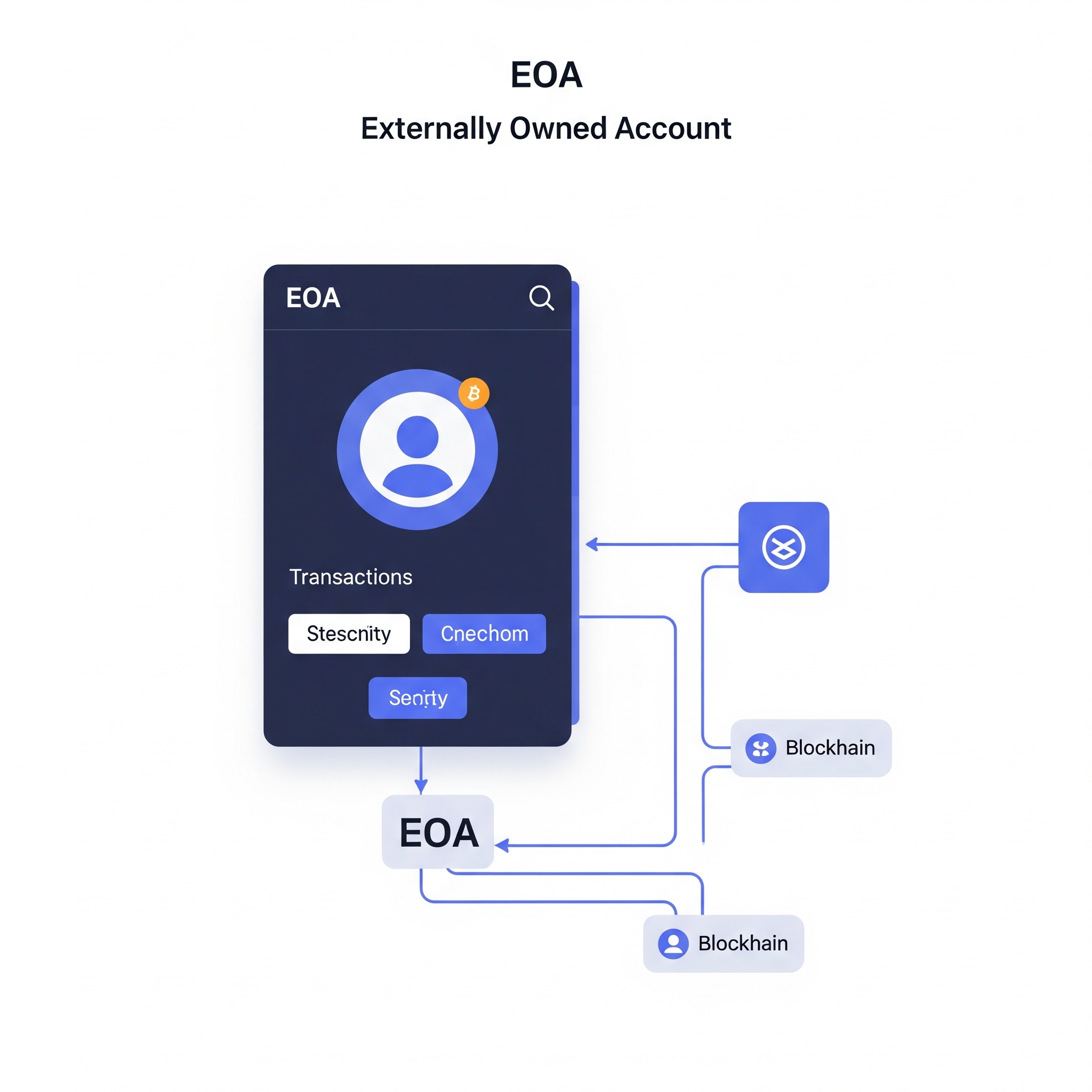EOA meaning blockchain

On blockchain networks like Ethereum and Ethereum Classic, an Externally Owned Account (EOA) is a basic kind of account that is mostly managed by an individual or an outside party with a private key. In contrast to Smart Contract Accounts (SCAs), EOAs are controlled by the private key holder rather than by code. They give a transacting entity in the decentralised network a distinct identity.
Also Read About Trusted Execution Environment TEE Definition, TEE Advantage
A thorough explanation of externally owned accounts is provided below:
Control and Ownership
- Private keys are used to guide EOAs. The private key is a hidden piece of information that grants the owner complete access and control over the account’s funds and the ability to conduct transactions. It is typically a big number (such as a seed phrase or a 256-bit randomly generated number).
- The holder can sign transactions and manage their digital assets with this ultimate proof of ownership. It is entirely the user’s responsibility to protect their private key.
- Since there is no central authority to reclaim the linked funds, losing or compromising a private key results in an immediate and permanent loss of access. The saying “Not your keys, not your crypto” reflects this.
Key Components: Public and Private Keys
- A cryptographic pair of keys a public key and a private key make up an EOA.
- Private Key: Shows network ownership by being used to sign transactions. A string of 64 hex characters is an example of a private key.
- The private key is the source of the public key. It is used to receive money and is freely shared. An EOA address can be obtained using the public key.
- A private key cannot be derived from a public key, but new public keys can be generated from a private key.
EOA Address Creation
- Usually, the procedure begins with the creation of a random 256-bit private key.
- This private key is used to generate the matching public key in Elliptic Curve Cryptography (ECC). Elliptic curves like Solana’s ed25519 and Ethereum’s secp256k1 vary by blockchain environment.
- Ethereum hashes public keys with Keccak-256 (SHA-3).
- Ethereum EOA addresses are created by truncating the hash, usually the last 160 bits. These 160 bits form the address. EOA addresses are 42-character hexadecimal strings starting with “0x”.
- Solana uses the public key straight, not hashing the address.
Account Features and Status Four fields are in Ethereum accounts:
- Nonce: A counter that blocks replay attacks and sequentially processes EOA transactions.
- Balance: The address’s Ether (ETH) or token holdings, measured in Wei (1 ETH = 10^18 Wei).
- CodeHash: This field indicates that an EOA does not contain executable code; it is the hash of an empty string.
- Since EOAs don’t store contract-specific data, StorageRoot is likewise empty.
Also Read About What Is JSON RPC API? Powers Node Communication & DApps
Functionality and Use Cases
- EOAs are essential to regular Ethereum network transactions.
- They are able to send, receive, and keep tokens and ETH.
- The only account type that can start transactions on the Ethereum network is an EOA. Until they are activated by an EOA or another smart contract, Contract Accounts are powerless.
- They can call particular blockchain functionalities and communicate with deployed smart contracts.
- They are able to implement new smart contracts as well.
- “Gas,” which is paid in ETH to miners or validators that handle transactions, is necessary for each transaction started by an EOA.
Security and Management
- An EOA’s security is totally dependent on how secure its private key is.
- Cryptocurrency wallets, which are hardware or software interfaces made to safely store and handle cryptographic keys, are used to administer EOAs.
- Software wallets, also known as hot wallets, are bits of code that safely hold private keys; these are frequently browser extensions or mobile apps (e.g., MetaMask, Trust Wallet, Rainbow). Due to their online connectivity, they are more susceptible to phishing and hacking attempts.
- Hardware wallets, also known as cold wallets, are tangible objects that save private keys offline for added security. They frequently employ a software wallet as a middleman and demand physical consent for every transaction. Trezor, Safepal, and Ledger are a few examples.
- Users that use non-custodial wallets have complete control and ownership of their private keys.
- With custodial wallets, users give their private keys to a third party (such as an exchange), which lessens user accountability but creates a single point of failure and necessitates faith in the third party.
- It is possible to deterministically derive and restore accounts by creating a mnemonic (Seed Phrase), which is a human-readable string of words that makes key management easier. But giving up control of all related finances is the same as compromising it.
Limitations and Challenges
- In contrast to Smart Contract Accounts, EOAs do not offer the option of account recovery in the event that keys are misplaced.
- Due to their inability to handle features like multisig, social recovery, two-factor authentication (2FA), and key sharding, they provide a more basic security paradigm.
- EOAs cannot batch or bundle transactions and require network base layer balances for petrol fees (such as ETH), unlike smart wallets that allow stablecoin payments.
- For non-technical users, managing EOA wallets and navigating the blockchain environment can be confusing, which can slow user onboarding.
EOAs are Web3’s basic user-controlled accounts for simple transactions and private key blockchain connectivity. However, they have no built-in recovery methods and impose a heavy security burden on the user.
Also Read About What Is An Equity Token Offering (ETO), IEO And DAICO?
